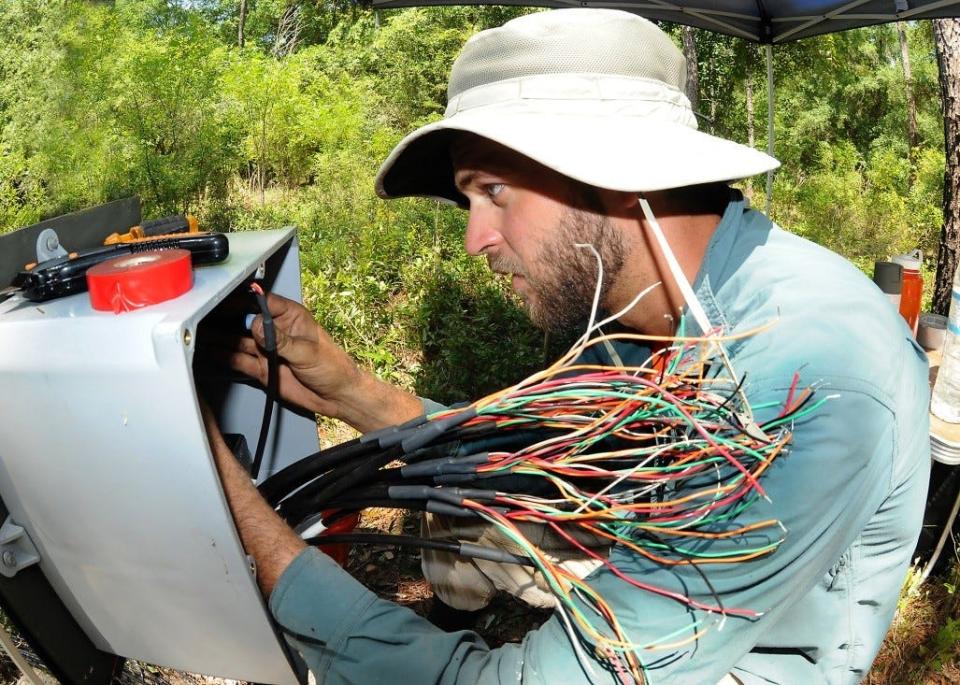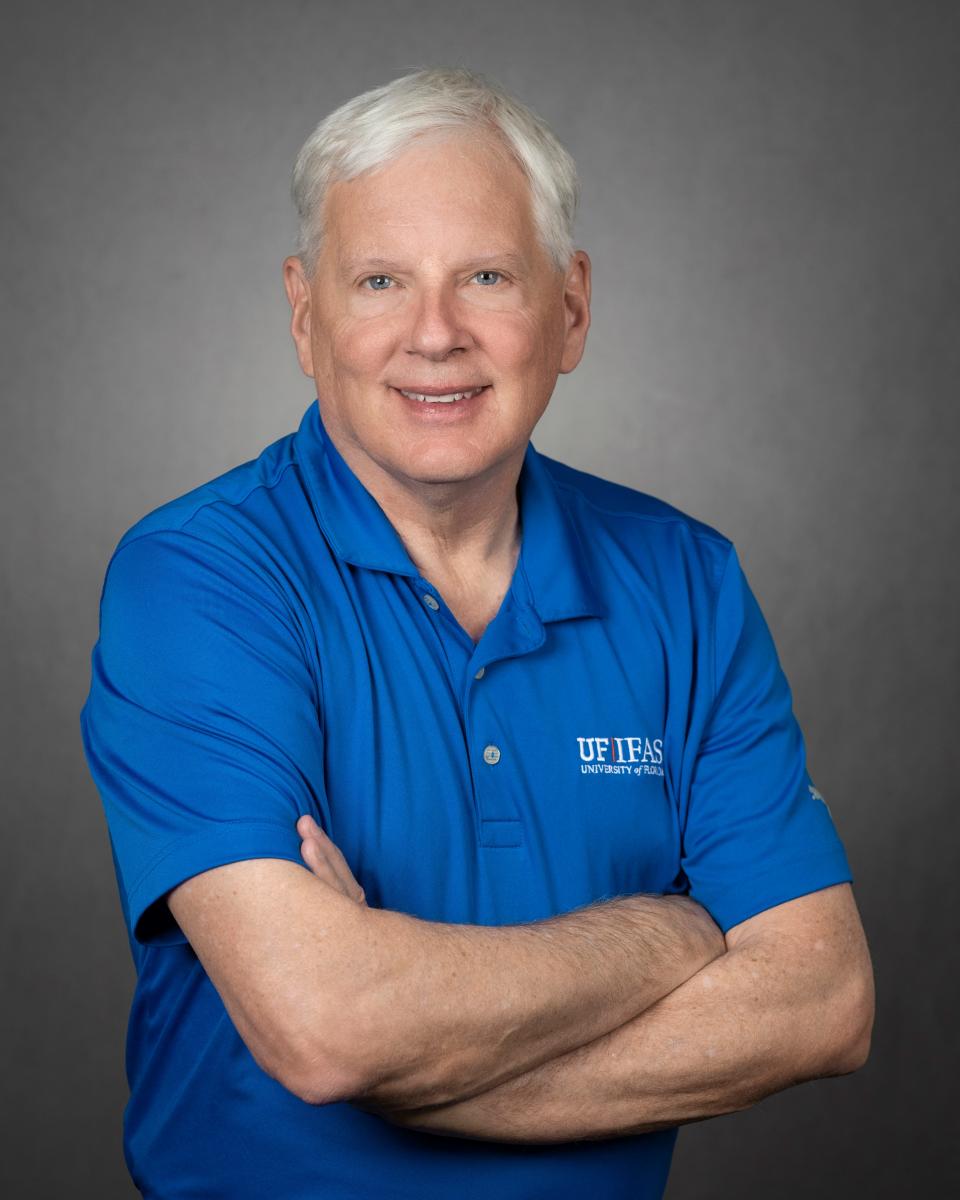UF/IFAS uses high-tech methods to improve farming practices affecting springs
We can have it both ways. We can protect our springs and have viable agriculture in Florida. It will take a lot of science and behavior change to do it.
Sixty million data points is a good start. That’s what Matt Cohen, of the University of Florida Institute of Food and Agricultural Sciences, collected from sensors in forest soils over four years to analyze how different approaches to forest management — heavily harvested to hardly touched — impact how much water flows from our springs.
What Cohen, a faculty member in the UF/IFAS School of Forest, Fisheries and Geomatics Sciences, has shown through his use of cutting-edge gadgetry and computing power is a path to better springs health. He has shown how we can use our working forests to improve water quality and quantity, not compromise it.
For springs science to inform springs protection, Cohen needs the funding, the ear and the input of partners.

He gets funding from state and federal agencies. He has water management districts and land conservation organizations interested in forest management as a tool for springs protection. He consults with environmental agencies and forestry groups for insights that refine his research and implement his findings.
This partnership model also plays out in a springs research project funded by the United States Department of Agriculture. Led by Wendy Graham, a UF/IFAS professor who is director of the UF Water Institute, the project analyzes tradeoffs between land use, water quality and quantity, and economics.
Using the kind of data that Cohen gathers, Graham’s team runs computer simulations to predict the range of outcomes between business as usual and widescale adoption of practices aimed at reducing fertilizer losses and increasing aquifer recharge from farms and forests. In that vast middle ground, we hope to find a balance that protects springs and keeps farmers and foresters in business.
Conservation groups, farmers, foresters, the Florida Farm Bureau, the Florida Department of Agriculture and Consumer Services, the Florida Department of Environmental Protection, the Suwannee River Water Management District and others advise Graham’s team as it develops the simulations.
When we hit on something that works, how a farmer or forester can reduce his or her environmental impact, we bring in economists to look at incentive programs to encourage adoption of such new practices. We also have an Extension team demonstrate it to producers statewide.
More from J. Scott Angle:
At UF/IFAS, we like to say that food is our middle name
UF/IFAS food scientists create baked good with health benefits
Treat trees as infrastructure, not afterthoughts
In the meantime, we also work a farm at a time to protect springs. Mark Clark of the UF/IFAS Department of Soil, Water, and Ecosystem Sciences has set up capture wells at a dairy in Gilchrist County to see if he can intercept wastewater before it enters our aquifer and springs. It’s a double win if the nutrient-enriched groundwater can be used on crops, saving farmers money on fertilizer, while unused captured leachate is treated using an innovative process found in wetlands.
Private sector participation is key to this work. First, a dairy has to open its gates to a wetlands ecologist like Clark. A tech company, in this case Soil and Water Engineering Technology, makes its capture system available. And dairy farmers tax themselves to help pay for the research.
The focus of Clark’s experiment is dairy, but what he learns could become broadly applicable to other forms of agriculture — and hence the need for Graham’s modelers to take this and go big with it.
We’ve long known that agriculture delivers more than food, feed, fuel and fiber. For example, timber, cattle and farming operations often provide wildlife habitat, sequester carbon and recharge the aquifer to feed springs.
We don’t know how much. Here’s where UF’s artificial intelligence initiative is helping. An existing AI partnership between UF/IFAS and Alina Zare in the Herbert Wertheim College of Engineering recently received $2 million from the Legislature to set up a system of drone-mounted hyperspectral sensors, satellite imaging and other data-gathering tools. They’ll tap into UF’s AI supercomputer, HiPerGator, to precisely quantify the environmental benefits of a given farming practice.

Cohen, Graham, Clark and Zare’s work documenting and discovering what is happening today must play an essential role in deciding what should be. A detailed picture of the costs and benefits of our land-use choices give us the best chance to make the best decisions for our springs — and how we should share the cost for those choices.
J. Scott Angle is the UF’s senior vice president for agriculture and natural resources and leader of UF/IFAS. This column is part of The Sun's Messages from the Springs Heartland series. More pieces from the series can be found at bit.ly/springsheartland.
Join the conversation
Share your opinions by sending a letter to the editor (up to 200 words) to letters@gainesville.com. Letters must include the writer's full name and city of residence. Additional guidelines for submitting letters and longer guest columns can be found at bit.ly/sunopinionguidelines.
Journalism matters. Your support matters.
Get a digital subscription to the Gainesville Sun. Includes must-see content on Gainesville.com and Gatorsports.com, breaking news and updates on all your devices, and access to the eEdition. Visit www.gainesville.com/subscribenow to sign up.
This article originally appeared on The Gainesville Sun: J. Scott Angle: UF/IFAS employs high-tech methods to protect springs

